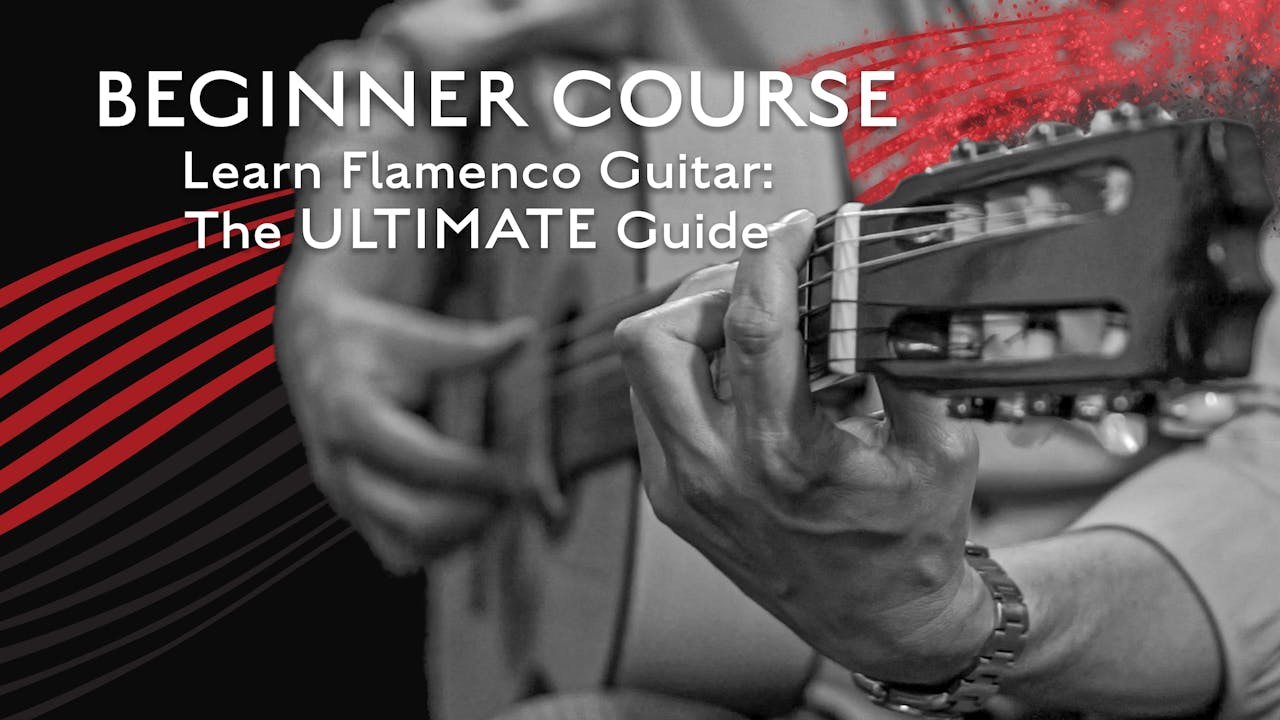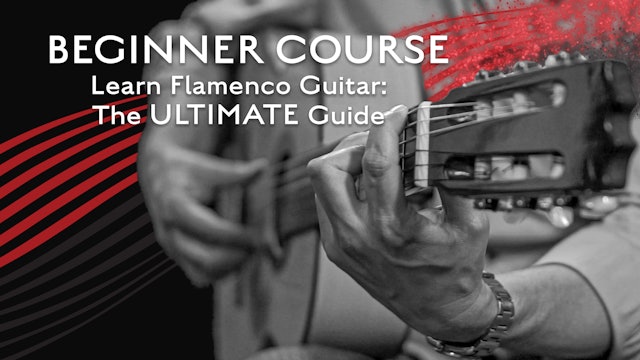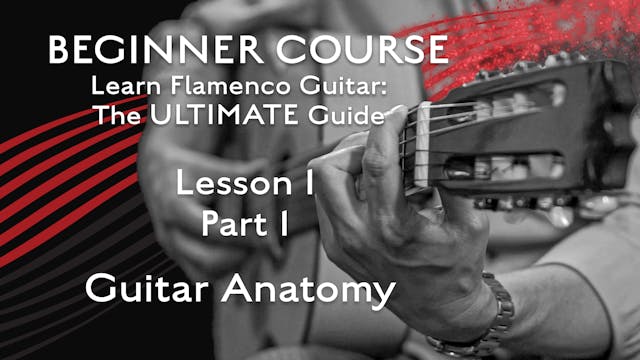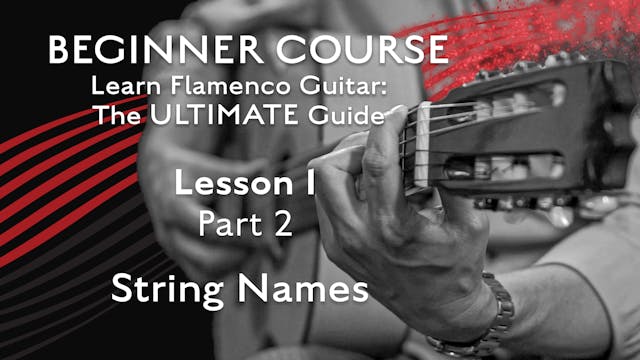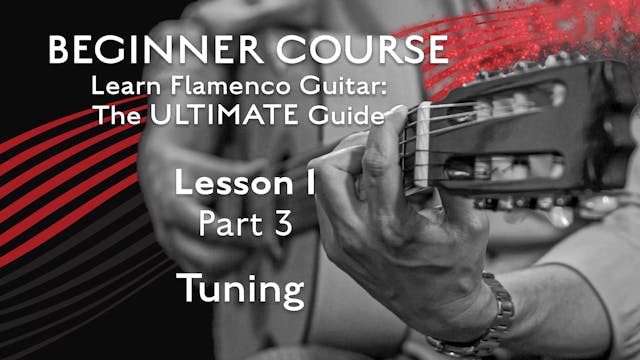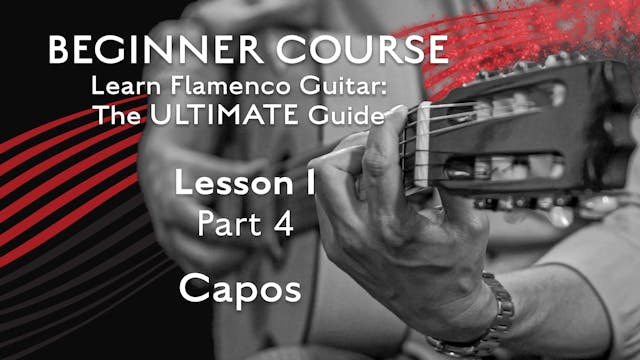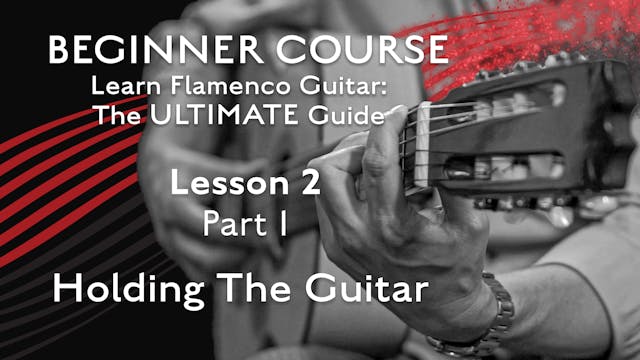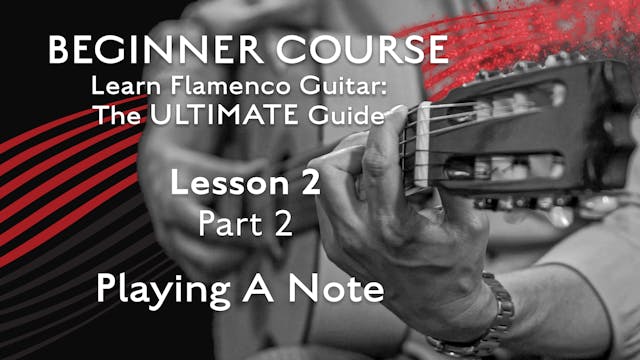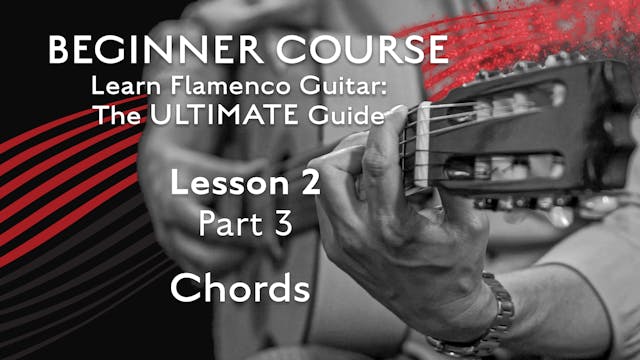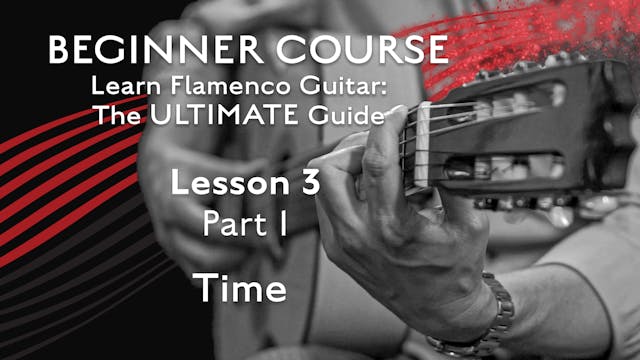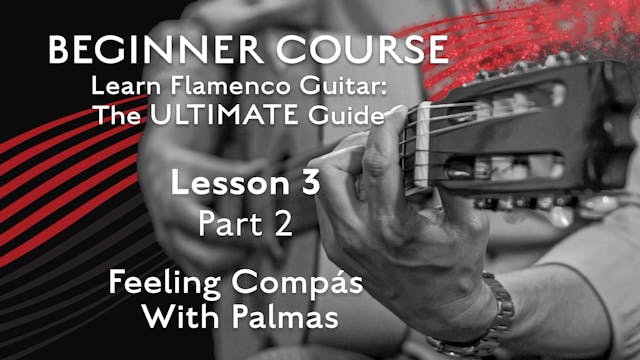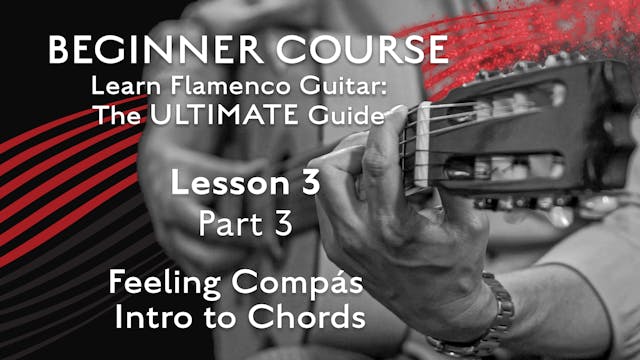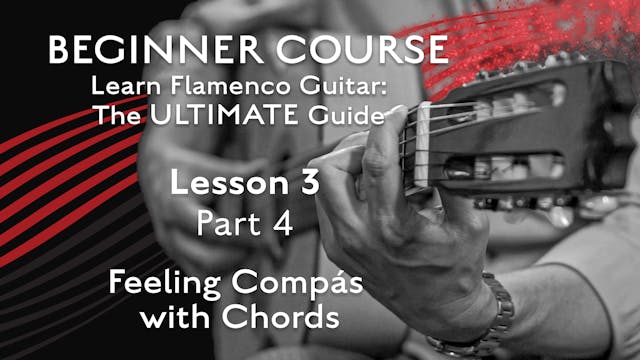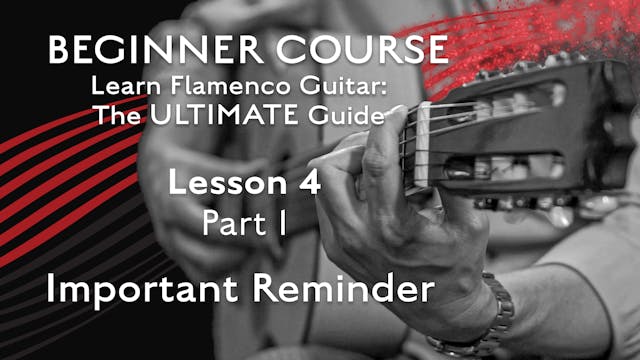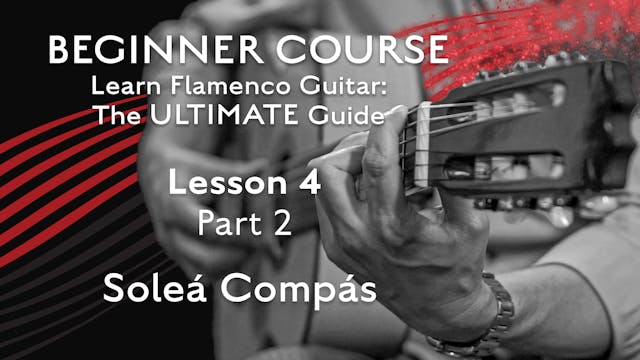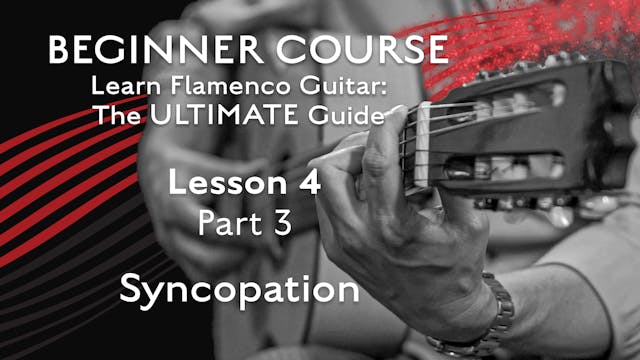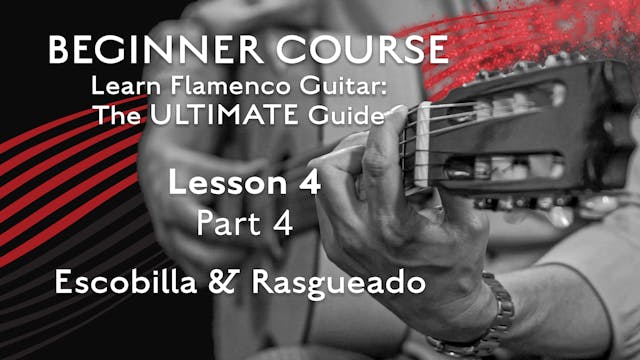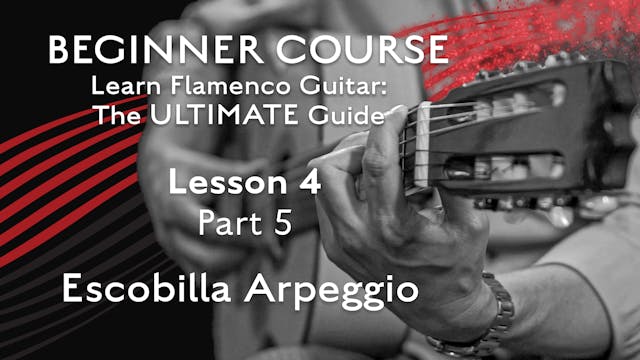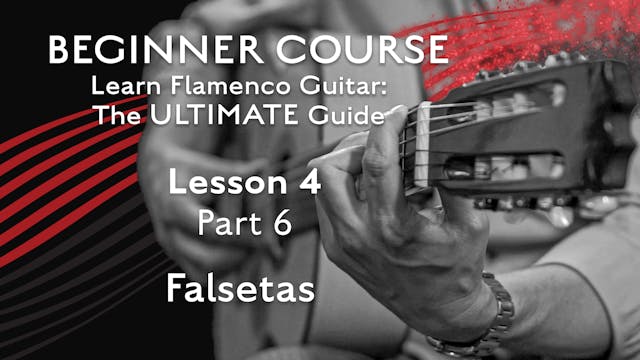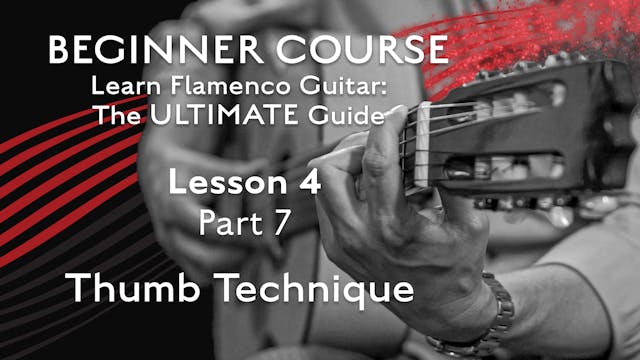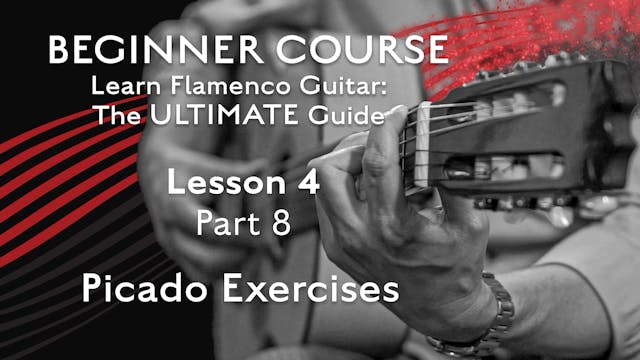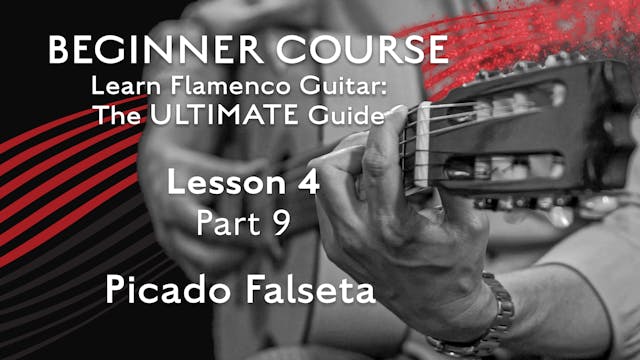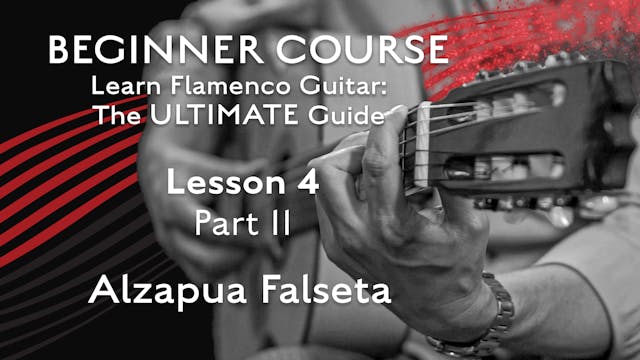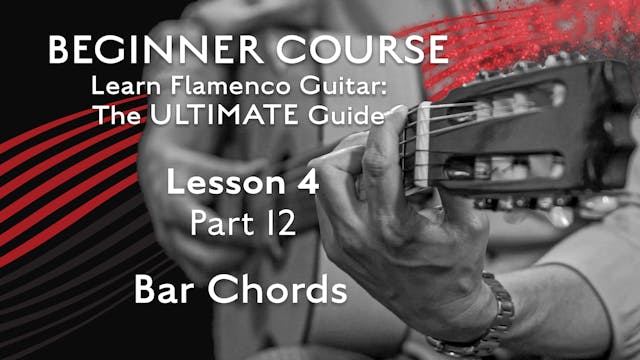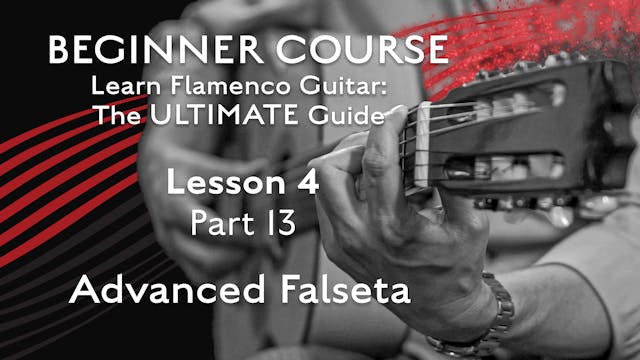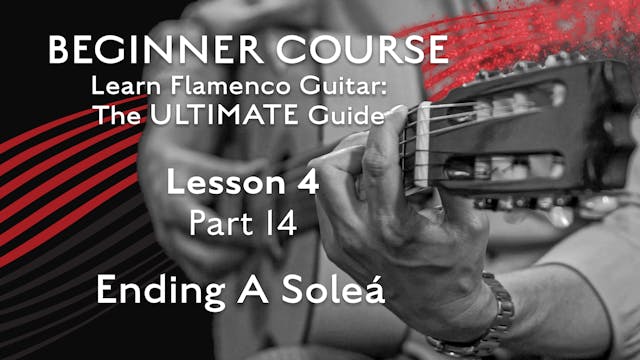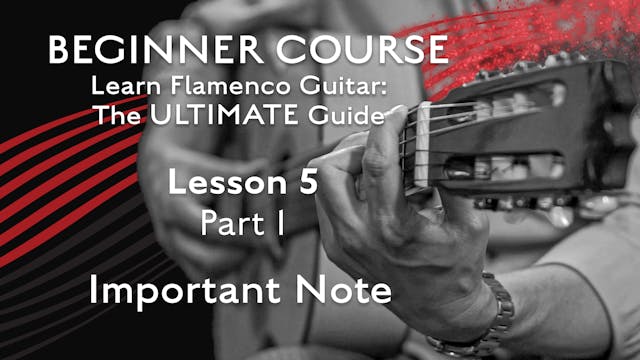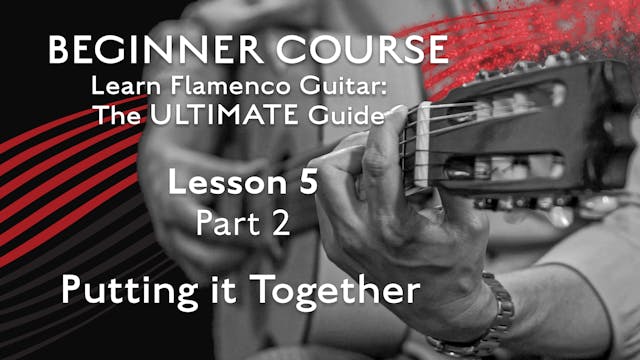Learn Flamenco Guitar - The Beginner Course
Featuring 28 videos totaling over 6 hours of lessons, this is where it all begins. Whether you’re new to the guitar or just new to flamenco, this course was designed to teach you what you need to know to not only play flamenco, but to truly understand how flamenco works so that you can play now, but also continue learning. This course will give you the fundamentals of flamenco that many spend a lifetime trying to grasp.
If you already play guitar or even if you already play some flamenco, we strongly encourage you take this course before continuing to the rest of the site. The concepts in this course will unlock many of the ‘mysteries’ of flamenco - that stuff that makes people think that flamenco is just too different or too hard to learn. It will also help you understand what I’m talking about in the rest of th videos on the site.
The first two Lessons are aimed at newcomers to the guitar and cover some basic principles like holding a guitar and tuning it, playing your fist notes and chords, and all of that good stuff.
By the first video in Lesson 3 we’re into material that anyone new to flamenco - or anyone feeling like it just hasn’t clicked yet - should find extremely useful.
We designed this course to be a distillation of the most important concepts in flamenco, broken down into a system I’ve been developing for over 25 years. This is the system that made so many of my students say things like “man, you need to write this down.”
If you’re serious about learning flamenco, take the course slowly. Give yourself time to internalize the ideas in each lesson. If you’re an experienced player and the material and techniques feel easy, make sure you have the concepts down before moving on. If you’re a beginner and it all feels like a lot, just take a breath and watch the video you’re working on again. Many of the techniques will take time to feel comfortable and easy, so go slow and give yourself the time.
We never said this would be easy, but we also know that anyone can learn flamenco guitar if they have the proper guide and a good attitude. We’ve taught hundreds of people to play real, authentic flamenco. This course is your first and most important step towards doing that yourself.
-
Course Material for Learn Flamenco Guitar - The Ultimate Guide
4.88 MB
-
Lesson 1 - Part 1 - Guitar Anatomy
In this video we look at the guitar itself - how it works, what we call all of the parts of it, and how we talk about where you put your fingers. Everything you need to know to get started!
-
Lesson 1 - Part 2 - String Names
In this video we look at the strings themselves and their names. We also look a little bit at whole steps and half steps. This is a good video to watch if this is all new to you. You don’t need to memorize any of this just yet, but it can’t hurt to know.
-
Lesson 1 - Part 3 - Tuning
We look at tuning your guitar. You’ll probably want to use a tuner, so w take a look at some of those, too. Being in tune will make everything sounds better - we promise!
-
Lesson 1 - Part 4 - Capos
Though we don’t use a capo in this course, the capo is used all the time in flamenco. So here we take a look a how some of the different kinds of capos work, and what you need to know to use one.
-
Lesson 2 - Part 1 - Holding the Guitar
There are lots of ways to hold the guitar. Here we look at some of the options and how to choose which one might be best for you. You may want to try more than one option to see which is best for you, and you don’t necessarily have to always use the same way.
-
Lesson 2 - Part 2 - Playing A Note
In this video we look at how both hands come together to play a note on the guitar. There is some very important information about the mechanics of both the left and right hands. This is hugely important not only for your sound, but for learning to play with ease and without hurting yourself.
-
Lesson 2 - Part 3 - Chords
Once we’ve learned to play a note we have to learn how to play chords. Again, learning the proper mechanics of it will help you sound better and also play with less effort.
-
Lesson 3 - Part 1 - Time
In this video we look at some abstract, but very important, concepts of time and rhythm. First we look at how measures and compass are organized, then we look at how beats are subdivided.
-
Lesson 3 - Part 2 - Feeling Compás with Palmas
We look at how to feel the compás of Soleá before even picking up a guitar learning some palmas (handclap) patterns. Palmas are the original percussion instrument in flamenco and an essential part of the music and the culture.
-
Lesson 3 - Part 3 - Feeling Compás Intro to Chords
We learn some of the chords that we’ll need to start playing flamenco!
-
Lesson 3 - Part 4 - Feeling Compás with Chords
Now that we’ve learned some chords and we’ve learned the basic compás of Soleá we start putting it all together on the guitar!
-
Lesson 4 - Part 1 - Important Reminder
A word from Kai about what we’re about to do, and how to proceed if you’re a little overwhelmed at this point. Also how to proceed if you’re working from the Flamenco Explained book (https://flamencoexplained.com/shop/flamenco-explained-guitarists-survival-guide-book/) and aren’t sure how to inco...
-
Lesson 4 - Part 2 - Soleá Compás
We start playing flamenco! First we talk about Soleá, the Palo (style) that we’ll be using to learn flamenco throughout this course, and then we dive in to playing compás.
-
Lesson 4 - Part 3 - Syncopation
-
Lesson 4 - Part 4 - Escobilla & Rasgueado
We look at a very important element of the Soleá compás called the Escobilla and we dive into one of the most distinctive and fun techniques in flamenco - the rasgueado. By the end of this lesson we’ll really sound like flamenco guitarists!
-
Lesson 4 - Part 5 - Escobilla Arpeggio
We look at another one of the main Escobilla melodies used in Soleá and we introduce arpeggio technique, which is the basis for much of our right-hand technique on the guitar. Then we recap the Escobilla material we have learned so far, and we look at how we can use some of the new material to ma...
-
Lesson 4 - Part 6 - Falsetas
In this video we look at a great traditional falseta that’s often used as an introduction for Soleá and we use this as an opportunity to look at the technique of slurs, which are more commonly known as hammer-ons and pull-offs. We also include a slightly advanced version of this falseta for those...
-
Lesson 4 - Part 7 - Thumb Technique
We learn another traditional falseta involving rest-strokes in the thumb, and we get into the finer points of using our thumb for flamenco. Proper thumb technique is essential to sounding flamenco, so this is a really important le
-
Lesson 4 - Part 8 - Picado Exercises
In our third falseta we look at Picado technique. These are the rest-stroke scales you’ve heard played at blinding speeds, and as with all technique we ned to learn some good fundamentals before we get going too fast, so we look at the mechanics and a few exercises before getting to our picado fa...
-
Lesson 4 - Part 9 - Picado Falseta
In this lesson we apply our new picado technique to a new falseta that uses nothing but picado.
-
Lesson 4 - Part 10 - Arpeggio Falseta
In this lesson we review arpeggio technique and add a new arpeggio exercise. Then we learn a great traditional intro falseta that really let’s us use our arpeggio to full effect.
-
Lesson 4 - Part 11 - Alzapua Falseta
In this lesson we look at another of the techniques unique to flamenco - Alzapua. We break down the technique and then look at a falseta so that we can apply this great new sound to our Soleá.
-
Lesson 4 - Part 12 - Bar Chords
In this lesson we look at how to make bar chords without stressing out your left hand. If you’re new to bar chords or if you’ve ever had any tension or pain from playing bar chords you’ll want to check this out. Plus it’s an important preparation for the falseta in the next lesson.
-
Lesson 4 - Part 13 - Advanced Falseta
We look at a falseta that combines arpeggio and picado and ends in a long scale run that will make you apply all of the good habits you’ve picked up in previous lessons. This one might be a bit challenging at first, but with time you’ll nail it!
-
Lesson 4 - Part 14 - Ending A Soleá
You’ll need a good way to end your Soleá, so we take a look at a few options you have for doing that.
-
Lesson 5 - Part 1 - Important Note
Some advice for anyone who might be feeling a bit overwhelmed, or like progress isn’t happening as fast as you’d like.
-
Lesson 5 - Part 2 - Putting it Together
This lesson gets to the heart of how flamenco works, which should make much more sense now that you have all the material necessary to put together your first solo. As we discuss how to arrange your own solo, we’ll learn the essence of how the flamenco mind thinks. This will help you make sense o...

